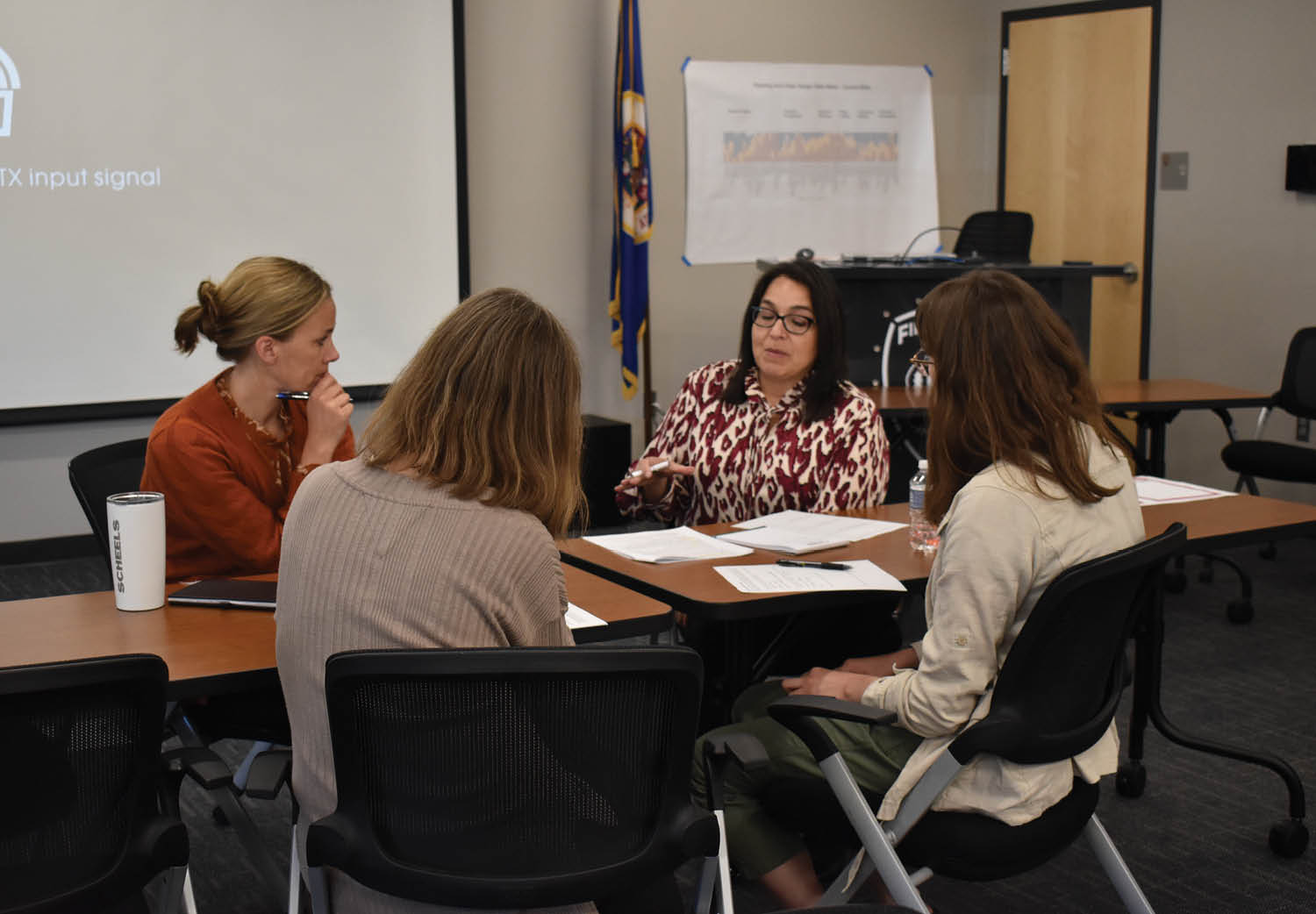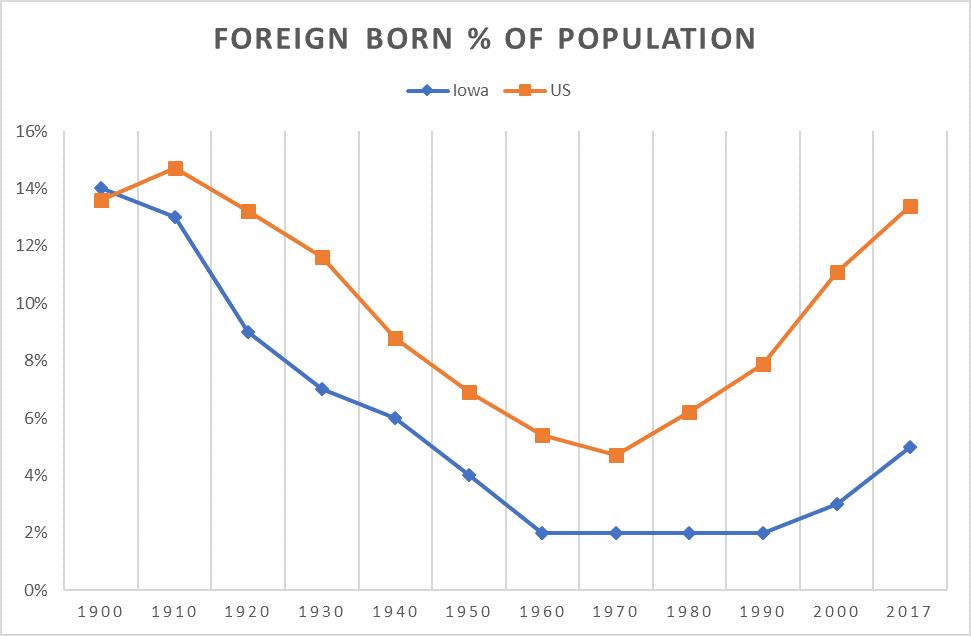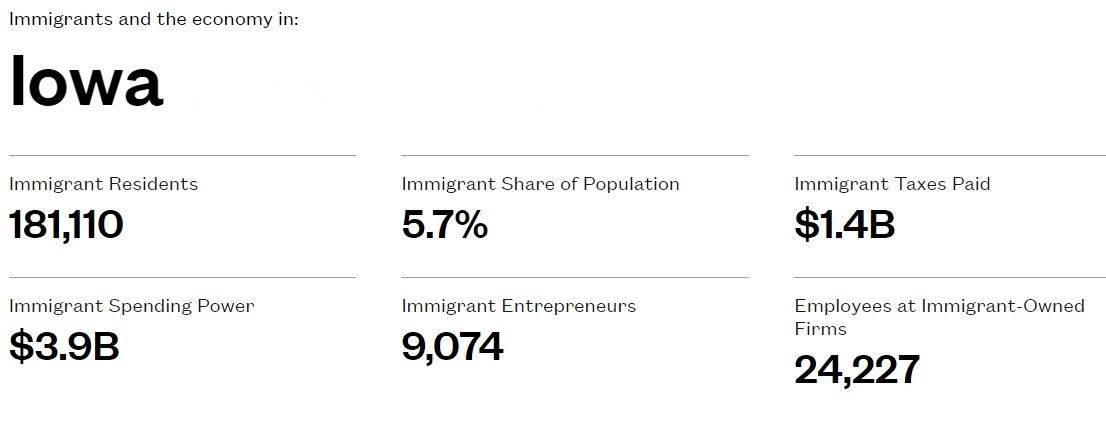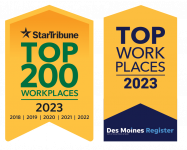
The Role of Immigration in Planning
With the important exception of indigenous people, most United States residents today can trace their origins back to other nations. Despite this, immigration remains a controversial topic in many communities. This article provides a brief history of immigration in the U.S., an assessment of its impacts, and suggestions on how planners can address current concerns.
History of Immigration
Immigration is typically motivated by both push (reasons to leave) and pull (reasons to come) factors. Since the original European settlement of the land that eventually became the United States, there have been several major waves of immigration. The actual number of immigrants by year has ebbed and flowed in response to policies and restrictions governing immigration into the country, as well as events and conditions elsewhere that precipitated immigration. Currently, over 5 percent of Iowa residents were born outside the U.S., as is around 6 percent of the workforce. Nationally, around 13 percent of residents were born outside the U.S.
The relationship between planning and immigration began early. As industrialization and the inflow of immigrant workers and their families fueled rapid growth of cities, planners responded to public health and safety needs regarding access to improved living and working conditions. This has continued, with some changes in response to the unique needs of each time.

Source: US Census Bureau
Impact
The impact of immigration on the U.S. has been immeasurable. There are many ways in which it contributes to society today.
- Populating and repopulating areas. Like many developed nations, the birth rate in the U.S. has declined. Immigrants replenish the population with younger people.
- Filling job vacancies. Likewise, immigrant workers play an important role in the workforce, as the native born workforce ages.
- Revitalizing retail and services. Immigrants are more entrepreneurial than the average U.S. inhabitant. This invigorates business and industry growth, especially small scale and startup enterprises.
- Making unique places. Immigrants bring their native food, art, music, and other cultural distinctives that make places interesting and distinct.
- Diversity of insights and perspectives. In an era of rapid change, diversity is a strength. New approaches and ideas help fuel creative solutions.

Source: New American Economy, 2018 data
What Can Planners Do to Help?
Despite the benefits associated with immigrant populations, many communities have expressed concerns about the nation’s ability to accept and assimilate immigrants. The following covers some immigration-related issues facing communities and provides ideas for how planners can help with a proactive and constructive response.
Issue 1: Learning Curve
With people moving to the country, there may be unfamiliarity with how things are done here. The ways of government, culture, society, and work may be significantly different from their native country. Information overload, balancing multiple priorities, and language barriers can add to the challenge.
Planners can assist with education and outreach to connect, inform, and include people in public processes. It may help to simplify rules and regulations, increase transparency of public processes, and work with liaisons and partners to make connections. These improvements can benefit new immigrant populations as well as many others who may be less familiar with these topics.
Issue #2: Cultural Distinctives
Another area of concern may be cultural distinctives. Each culture brings its own practices with regards to food and drink, recreation, religion, business practices, dress, living arrangements, and social interactions.
Planners can assist by educating themselves and others on cultural differences. This can provide insight about how regulations and practices might have unforeseen consequences and need to be adjusted to better accommodate newcomers. On the other hand, it may can identify education topics for immigrants on these issues. Planners can also encourage recognition and celebration of positive differences that bring value, interest, and variety to the community.
Issue #3: Assistance Needed
The most challenging issue is that immigrants arrive in this country somewhat under duress. They may be refugees from conflict, or just seeking a better life. As a result, they may need some initial assistance from the government or nonprofits to meet their basic needs before they are able to be fully self-sufficient.
Planners can provide referrals for needed programs and services, support affordable housing options, promote workforce development strategies, and help to hire diverse workers and partners. It is important to acknowledge that solutions here can span the full political spectrum—both helping people in need through assistance and empowering those who have a desire to work to succeed here.
In Summary
While the impact of immigration on the U.S. has been immeasurable, immigration remains a controversial topic in many communities. Planners are in a unique position to facilitate community cohesiveness by learning more about cultural distinctives, helping with community education and outreach, and providing service referrals and employment options to help new immigrants become self-sufficient. Our communities grow better and stronger when we see diversity as a strength.
As published in CityScape
 Haila Maze, AICP is a senior urban planner at Bolton & Menk, who is committed to providing excellent project management, creative community engagement strategies, health impact assessments, land use and transportation modeling, community development lending, and environmental reviews to contribute to the long-term success of our client communities. She draws on her experience with local and regional planning projects to connect with clients and help them identify what they need and how to accomplish it.
Haila Maze, AICP is a senior urban planner at Bolton & Menk, who is committed to providing excellent project management, creative community engagement strategies, health impact assessments, land use and transportation modeling, community development lending, and environmental reviews to contribute to the long-term success of our client communities. She draws on her experience with local and regional planning projects to connect with clients and help them identify what they need and how to accomplish it.
